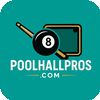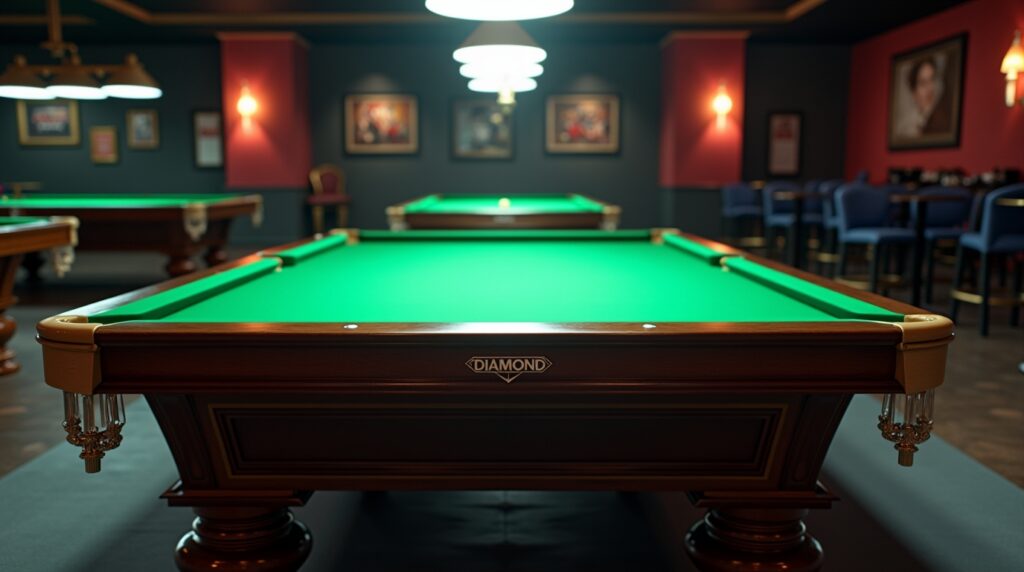This post contains affiliate links. We may earn a commission if you purchase professional pool tables through our links, at no extra cost to you.
Last year’s US Open 9-Ball Championship. Atlantic City. I showed up for practice rounds two days early.
First thing I did? Measured the pocket openings. All twelve tables. Calipers don’t lie.
Table 7 was 0.06 inches too wide at the corner pockets. I requested a different table assignment. Tournament director thought I was being difficult.
Day three, Table 7 rejected four shots that should have rattled out. Two players complained. TD measured. I was right.
That’s the difference between “tournament-grade” and actually meeting WPA specifications.
The $12,000 Mistake
Friend of mine bought a “professional pool table” for his training facility last year. Paid $12,000. Brunswick knockoff. Beautiful table.
Failed BCA inspection within three weeks.
Pockets were 1/8 inch over spec. Rails were synthetic rubber, not natural gum. Slate was 7/8 inch instead of full 1-inch minimum.
He couldn’t get sanctioned for regional tournaments. Had to sell it for $4,500. Bought a real Diamond for $9,800.
Expensive lesson: “professional-looking” isn’t the same as “professional specification.”
WPA/BCA Specifications (What Actually Matters)
I’ve played on 200+ tournament tables across seven countries. Here’s what gets measured at every sanctioned event:
Playing Surface: 9 feet × 4.5 feet
Not 8.5 feet. Not “oversized 8-foot.” Exactly nine feet. I’ve seen tables disqualified for being 1/4 inch short.
Slate Thickness: 1-inch minimum
Three-piece preferred. Single-piece acceptable if properly supported. Tournament directors check this. They bring calipers.
Table Height: 29.25″ to 31″ (floor to playing surface)
I’m 5’6″. Most women pros are my height or shorter. Table height affects our entire stroke mechanics. Too high and we can’t get proper bridge position.
Pocket Specifications:
- Corner pockets: 4.5 to 4.625 inches
- Side pockets: 5 to 5.125 inches
This is where 80% of “pro” tables fail. Manufacturers go loose on pockets because players think it makes them better. It doesn’t. It makes the game different.
Rail Profile: K-66 with natural gum rubber cushions
Synthetic rubber has different rebound characteristics. At professional level, you notice immediately. Shot calculations are off. Bank shots don’t track right.
Cloth: Worsted wool, 19-21 ounce weight
Simonis 860 is standard at most major tournaments. Some use Simonis 760 (faster). Nobody uses napped cloth in professional competition.
The Four Tables I Trust
I’ve played championship matches on all four of these. Multiple times. Different venues. Different conditions.
They pass inspection. Every time.
Diamond Professional Series ($8,500-$11,000)
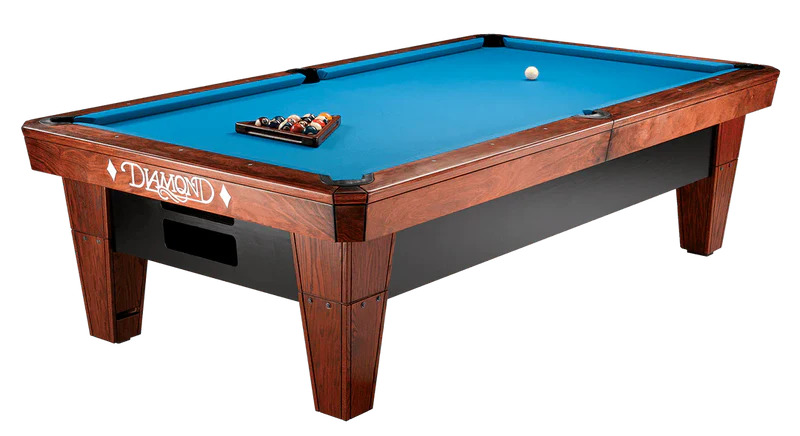
Diamond Professional Pool Table – Check Dealer Pricing
The table I practice on six days a week.
Why it’s the standard: The US Open uses Diamond tables. World Pool Masters uses Diamond tables. China Open uses Diamond tables. There’s a reason.
Pockets are cut to exact specification. Not 0.05 inches over. Not 0.02 inches under. Exact. I’ve measured dozens of Diamond tables across different venues. Consistency is remarkable.
What sets them apart:
- Steel frame construction (wood frames can warp in humidity)
- Precision-machined pocket irons (±0.001 inch tolerance)
- K-66 cushions with natural gum rubber (tested to 50,000+ impacts)
- One-inch slate, three-piece construction
- Powder-coated finish (doesn’t chip during transport)
Real tournament experience: I played the 2023 Derby City Classic on Diamond tables. Shot a 93-ball run in 10-ball. Table played identical on day one and day seven. That’s consistency.
Installation requirement: 700+ pounds of slate. Professional installation mandatory. Diamond recommends their certified installers. Worth the $800-1,200 cost.
Best for: Tournament venues, serious training facilities, professional players who practice at home.
Skip if: You’re not hosting sanctioned events. There are tables that play 92-95% as well for significantly less money.
Brunswick Gold Crown VI ($13,500-$15,000)
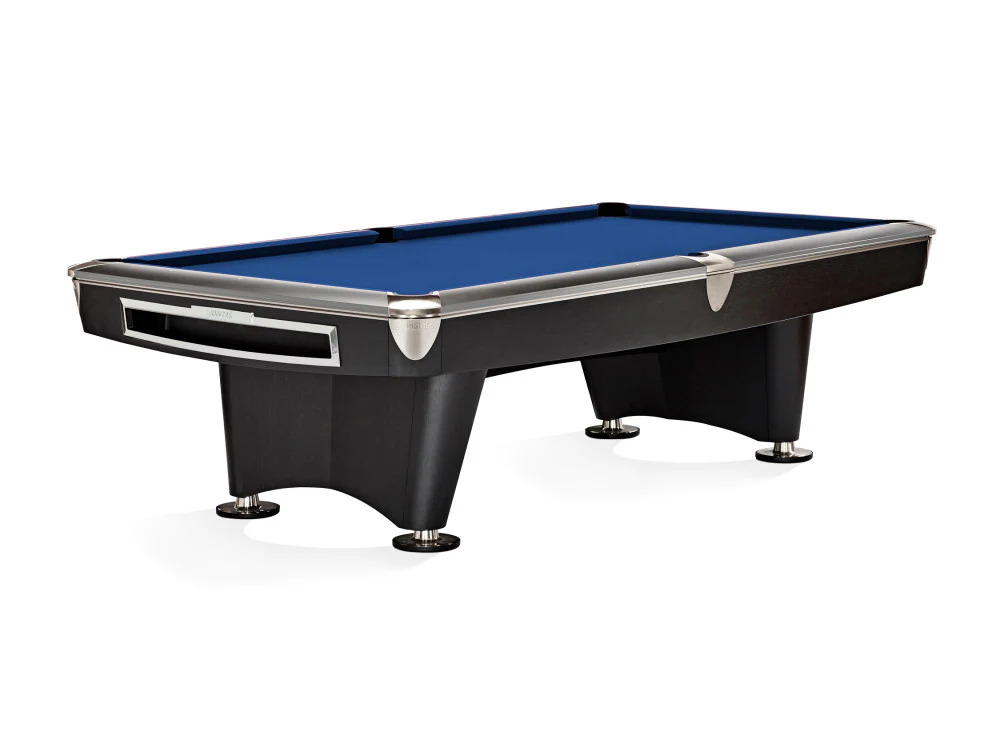
Brunswick Gold Crown VI – Authorized Dealers
The table I grew up playing on.
My first tournament at age 14 was on Gold Crown V tables. Played Jeanette Lee in an exhibition match on a Gold Crown in 2018. These tables have history.
Why pros still use them: Consistency. Brunswick’s been making these since 1961. The manufacturing process is dialed in. Tolerances are tight.
Technical specifications:
- Meets all WPA/BCA requirements
- Super Speed cushions (Brunswick’s gum rubber formula)
- Available in 8-foot and 9-foot (get the 9-foot for tournament spec)
- Certified by USBA for professional play
- Maple wood frame (properly kiln-dried, won’t warp)
Unique advantage: Brunswick’s Nu-Life cushion rubber. Tested to maintain consistent bounce characteristics for 40+ years. I’ve played on Gold Crowns from the 1980s with original cushions. They still play true.
Pocket comparison to Diamond: Slightly more forgiving. Maybe 0.03 inches wider on average. Most players can’t tell the difference. I can. For championship training where every shot matters, Diamond is tighter.
Best for: Established pool halls, training facilities that want proven reliability, players who grew up on Gold Crown and prefer the feel.
Not ideal for: Players specifically training for events that use Diamond tables (the slight pocket difference matters at championship level).
Olhausen Grand Champion III ($6,500-$8,900)
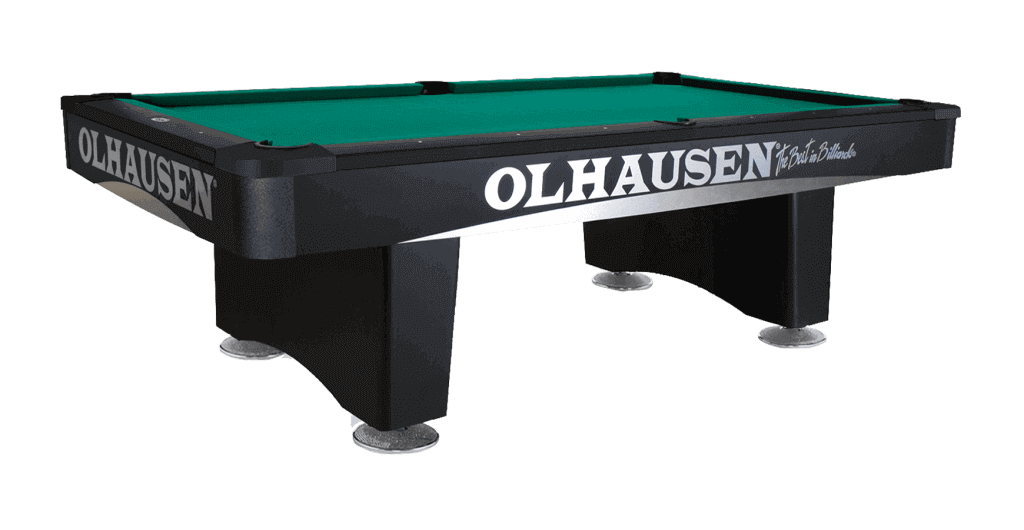
Olhausen Grand Champion III – Find Dealers
The table that surprises people.
I played a regional qualifier on Olhausen tables in 2022. Expected to hate them. Didn’t. They played clean.
Why it’s cheaper: Olhausen manufactures in Tennessee. No overseas shipping. Lower marketing budget. They pass savings to buyers.
Performance? Meets every BCA specification. Measured them myself at that tournament.
Build quality:
- Precision-ground 1-inch slate
- Accu-Fast cushions (natural gum rubber, K-66 profile)
- Hardwood frame construction
- Lifetime warranty on frame and slate
- BCA-approved for regional and state tournaments
Trade-off: Finish quality isn’t Brunswick level. Wood grain inconsistencies if you look close. Under tournament lights during play? Nobody notices.
Tournament use: You’ll see these at state championships and regional events. Not at World Pool Masters. That’s brand recognition, not performance.
Best for: Leagues needing tournament specifications without Diamond pricing. Training facilities on budget.
Skip if: You’re hosting televised events where table aesthetics matter for broadcast.
Connelly Billiards Catalina ($5,800-$7,500)
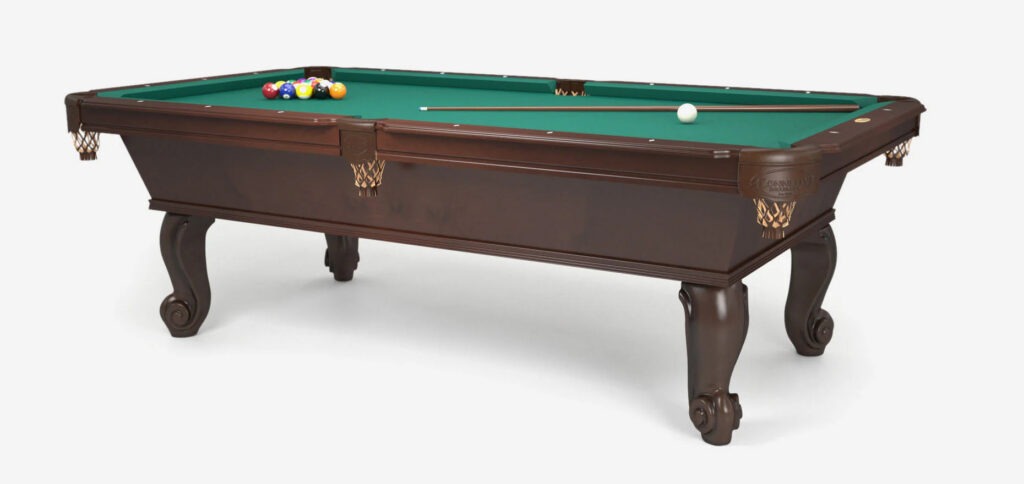
Connelly Catalina – Dealer Locator
The underdog nobody talks about.
Played an ACS tournament on Connelly tables in Las Vegas, 2023. Players complained before warm-up (brand bias). After first rack? Silence.
Tables played.
Specifications:
- BCA and WPA certified
- 1-inch precision-ground slate (three-piece)
- Saturn II cushions (gum rubber, K-66 spec)
- Cabinet-grade wood construction
- Tournament pocket specifications
Unexpected advantage: Lightest professional table I’ve tested. 150 pounds lighter than Diamond. Installation is easier and costs less ($500-700 vs $800-1,200).
Performance: Pockets are cut correctly. Rails respond consistently. Cloth installs flat. Everything a professional table should do.
Limitation: Availability. Connelly has fewer dealers. Lead times can stretch to 12 weeks. Plan accordingly.
Best for: Markets where Connelly has strong dealer support. Excellent value if you can find them.
Skip if: You need the table installed next week.
Tables That Fail Inspection
Let me save you from mistakes.
Barrington Billiards “Premium” ($1,000-$2,800)
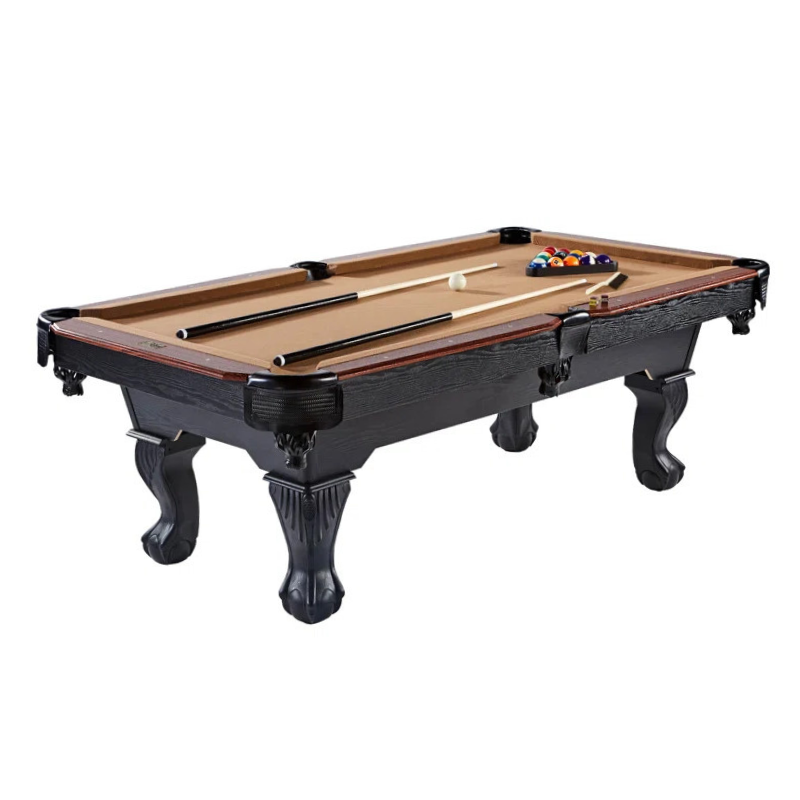
Barrington Billiards 7′ Pool Table on Amazon
Marketed as “tournament-quality.” Measured one at a friend’s house. Pockets were 0.23 inches too wide. Rails are synthetic rubber. Won’t pass inspection.
Any 8-Foot Table Marketed as “Professional”
Professional tables are 9 feet. Period. An 8-foot table can be excellent for recreational play. It’s not professional specification.
Tables with 3/4-inch Slate
Minimum is 1 inch. Thinner slate doesn’t maintain level as well. Won’t pass WPA certification.
What I Check at Tournament Venues
My pre-tournament routine. Takes five minutes. Tells me everything.
Pocket Test:
Shoot balls slowly into each pocket from six inches away. If any rattle out, pockets are too shallow or wrong angle.
At the 2024 Women’s World 9-Ball Championship in Mongolia, Table 4 had a shallow left corner pocket. Three balls rattled out during my match. Tournament director adjusted pocket facings after my round. Should have been checked beforehand.
Rail Response:
Shoot full speed into each rail. Listen for dead spots. Consistent sound means good cushions.
One dead spot tells you the rail wasn’t installed properly. Multiple dead spots mean the cushions are old or wrong material.
Cloth Speed Test:
Roll cue ball length of table with medium force. Should slow to stop naturally. Shouldn’t grab or slide excessively.
New Simonis 860 cloth has specific friction characteristics. After 100 hours of play, it changes slightly. After 500 hours, it needs replacement.
Level Verification:
Place cue ball at head spot. Shouldn’t drift. Seems obvious. Half the “level” tables I test aren’t actually level.
Used a digital level at a regional event last year. Table was 0.08 degrees off. That’s enough to affect ball drift on long shots.
Pocket Facing Inspection:
Run finger inside pocket openings. Smooth leather facings. No sharp edges that chip balls.
Found a rough edge in a side pocket at Derby City in 2022. Told tournament staff. They found two chipped balls in that pocket’s collection system. Fixed it immediately.
Installation Matters as Much as the Table
Watched a Diamond Professional get installed wrong at a training facility in California. $10,000 table. Installed by “a guy who moves pool tables.”
Table came out unlevel. Pocket irons misaligned. Rails had gaps where they bolted to the frame.
Professional installer came to fix it. Charged $1,200 to redo what should have been done right the first time.
What Professional Installation Includes:
Precision Leveling:
Uses digital levelers or laser levels. Accuracy to 0.001 inches across entire surface. Bubble levels aren’t precise enough.
Beeswax Seam Joining:
Three-piece slate gets joined with heated beeswax. Creates seamless surface. Cold wax doesn’t bond properly. Putty is amateur work.
Proper Cloth Stretching:
Tight enough to prevent bunching. Not so tight it affects ball roll. This requires experience. Too tight and the cloth creates drag zones.
Pocket Iron Alignment:
Each pocket positioned to exact specification. One loose bolt changes pocket width by 0.02-0.05 inches. Enough to fail inspection.
Rail Installation:
Rails torqued to specific tightness. Too loose and they shift during play. Too tight and they stress the slate, causing cracks over time.
Cost: $600-$1,200 for professional installation on a 9-foot table. Worth every penny.
DIY Installation?
Don’t.
Watched three experienced players install a Gold Crown. Took 14 hours. Still unlevel. Paid a professional to fix it. Cost more than just hiring the pro initially.
Professional installers do it in 4-6 hours. It’s level. It’s correct. You sleep easy.
Find a billiards/pool installer in your area
Maintenance (What Tournament Tables Require)
Professional tables need professional care. Professional Pool Maintenance Pro directory
Monthly Maintenance:
Brush Cloth Daily:
Removes chalk dust before it embeds. At tournament level, we brush between matches.
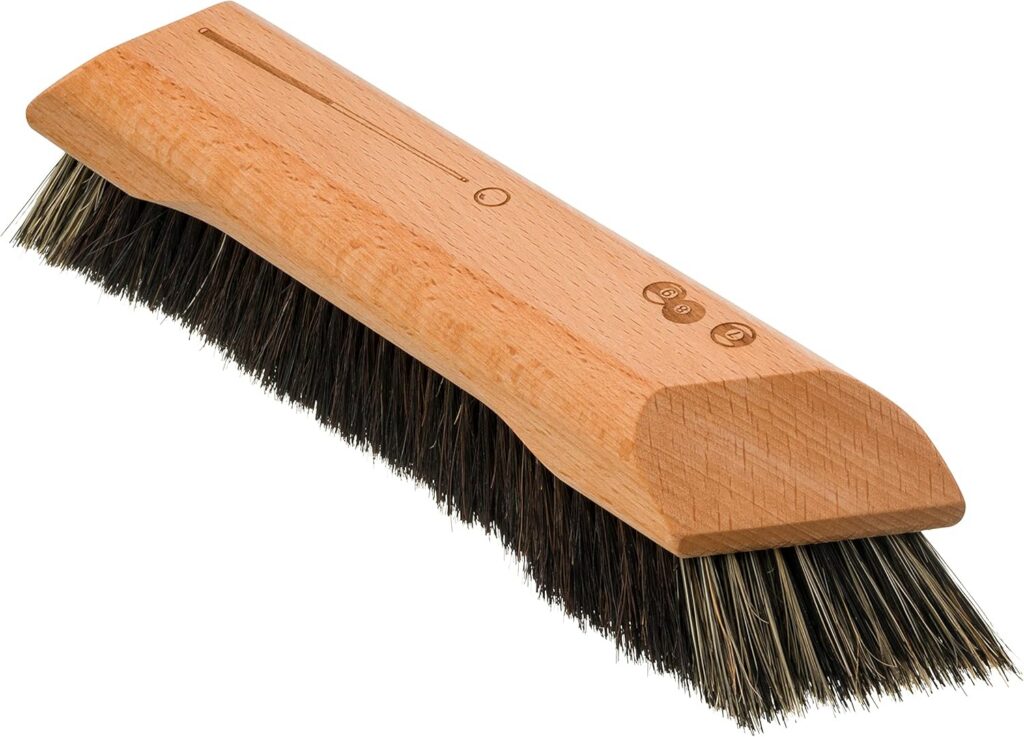
REDECKER Horsehair Billiards Table Brush on Amazon – Professional-grade horsehair brush.
Inspect Pocket Facings:
Leather wears. Replace before it splits. Damaged facings chip balls.
Verify Level:
Tables settle. Check every six months minimum. Even in climate-controlled rooms.
Clean Rails:
Dirt affects ball response. Wipe weekly with barely damp microfiber cloth.
Annual Service:
Cloth Replacement:
Tournament cloth wears differently than recreational cloth. Heavy use requires annual replacement.
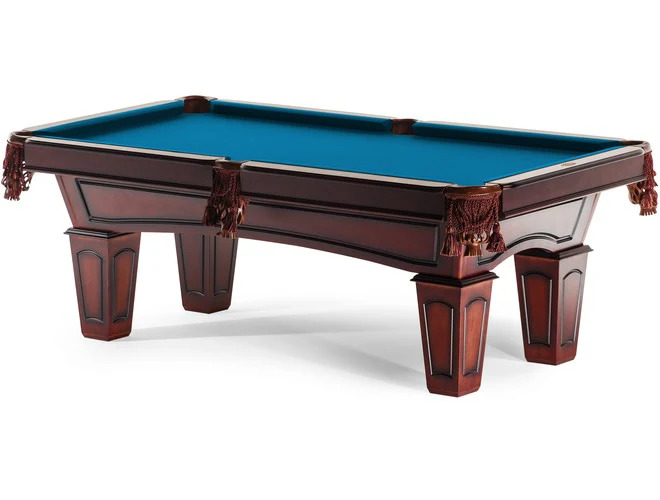
Simonis 860 Tournament Blue Cloth 9ft on Amazon – Professional-grade worsted wool.
Cushion Testing:
Bounce test each rail. Inconsistent response means cushions need work.
Pocket Width Verification:
Check widths haven’t expanded from wear. Adjust pocket irons if needed.
Full Re-leveling:
Buildings settle. Temperature changes affect wood frames. Annual professional re-level is mandatory.
Annual Cost: $400-$600 for proper professional table maintenance.
Buying Used Professional Tables
Used tournament tables exist. Sometimes they’re value. Sometimes they’re disasters.
Good Used Table Indicators:
- Recent installation (under 3 years)
- Owned by established league or hall
- Maintenance records available
- Reason for sale makes sense (hall closing, upgrading)
- Seller allows inspection before purchase
- Price is 50-60% of new
Red Flags:
- No maintenance records
- “Played great last time we used it” (when was that?)
- Cloth visibly worn or pilled
- Rails sound dead when tapped
- Seller won’t allow pocket measurement
- Price seems too good
What I’d Buy Used:
Diamond Professional under 5 years old with documentation. These tables last 30+ years properly maintained. A 3-year-old Diamond for $5,500 is legitimate value.
What I Wouldn’t Buy Used:
Unknown brands without parts availability. You’re buying someone else’s problem.
The Real Cost
Table price is the beginning.
Full Tournament Table Budget:
- Table: $6,500-$11,000
- Delivery: $300-$800
- Professional Installation: $600-$1,200
- Tournament Cloth Upgrade: $0-$400
- Proper Lighting: $400-$1,500
- Tournament Balls/Accessories: $200-$400
Total: $8,000-$15,300
Plus $400-600 annual maintenance.
Is It Worth It?
You need a professional table if:
- Hosting sanctioned tournaments
- Running competitive leagues
- Operating commercial pool hall
- Training for professional competition
- Want guaranteed regulation specifications
You don’t need one if:
- Casual home use
- Recreational league that’s not specification-picky
- Budget under $5,000 total
- Just learning the game
My Recommendation by Use Case
For Tournament Venues:
Diamond Professional. You’ll never fail inspection. Never question consistency. Never explain to players why equipment isn’t standard.
For Established Leagues:
Brunswick Gold Crown VI. Proven over decades. Players recognize quality. Plays true.
For Budget-Conscious Serious Players:
Olhausen Grand Champion. Meets all specifications. Plays like tables costing thousands more.
For Testing Tournament Setup:
Find a good used Gold Crown or Diamond. Someone else absorbed the depreciation. You get tournament specs at reduced cost.
What I Wish I Knew Earlier
Professional tables are investments, not purchases.
They don’t wear out in 5-10 years. They last decades. Properly maintained, the slate outlives you.
So yes, $9,000 feels insane. But divide by 30 years of use? $300 annually.
Add maintenance: $700 per year total.
Your local hall charges $10/hour table time. 70 hours yearly breaks even. Less than two hours weekly.
Suddenly that professional table makes financial sense.
The Bottom Line
Professional doesn’t mean “expensive.”
It means “meets exact specifications for sanctioned competitive play.”
Diamond and Brunswick command premium prices because they’re proven. Olhausen and Connelly meet the same specs for less.
Your choice depends on what you’re prioritizing—brand recognition or actual performance.
Both work. Just know what you’re buying.
Prices accurate as of January 2025. Professional table prices vary by dealer and region. As an Amazon Associate, we earn from qualifying purchases on equipment and accessories.
